Hellebores are indispensable in the garden – they look good for months on end, from midwinter to spring, with attractive, often evergreen foliage. Their flowers come in a range of colours, from pure white to pale lemon yellow and green, myriad shades of pink and even purple-black.
You may also like
Hellebores look beautiful combined with other late winter and early spring plants, such as cyclamen, snowdrops, narcissi, witch hazel and daphnes. They are often still out when tulips begin to flower in April and May.
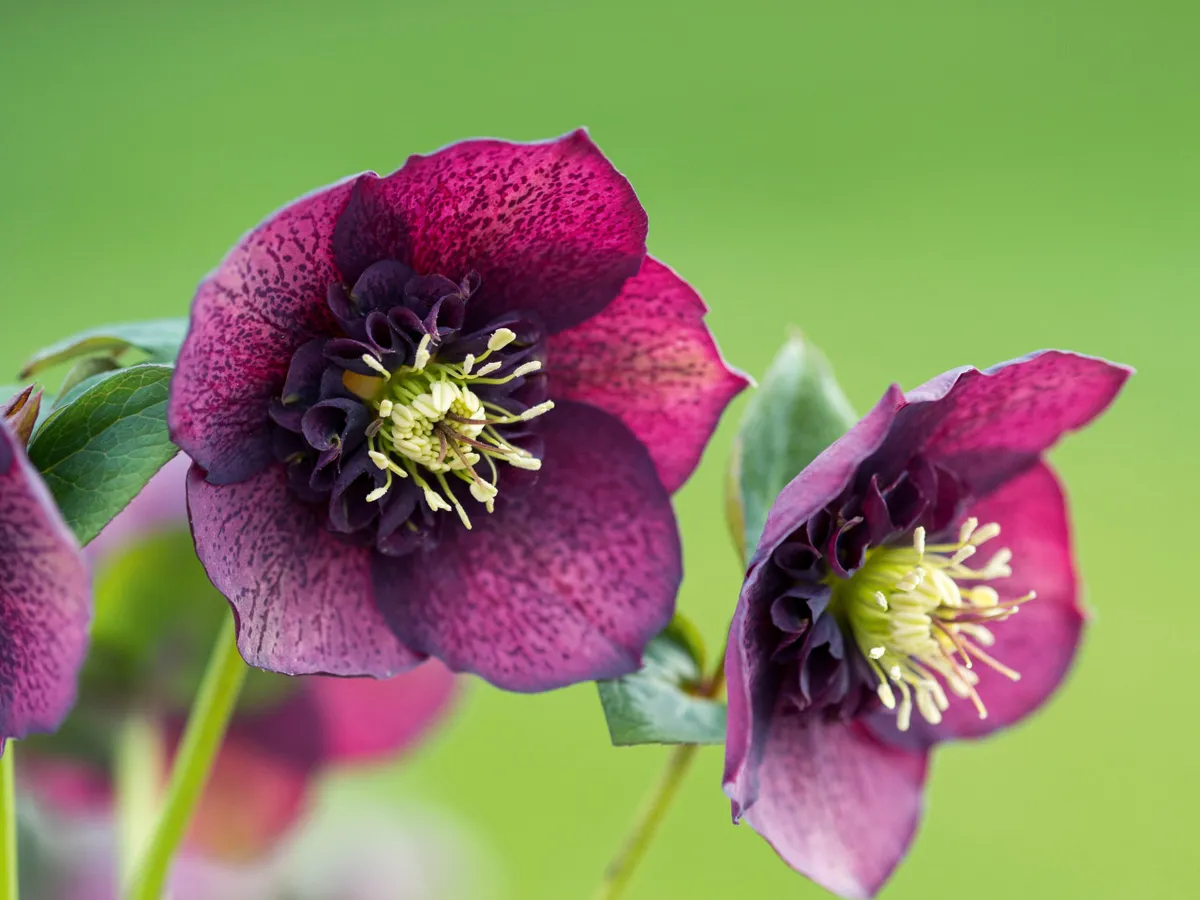
Hellebore flowers are also rich in nectar and pollen, at a time of year when these are often scarce, giving much needed sustenance to bees. The nodding flowers protect the pollen from rain, as well as the insect feeding on it.
Most hellebores used to be known as Helleborus orientalis, but so much breeding has taken place and the details of most hellebore’s parentage is so muddied, that they are now known as Helleborus x hybridus.
Here's our advice on growing hellebores. We also include experts' recommendations for the best hellebores to grow.
Jump to
- When to plant hellebores
- Where to plant a hellebore
- How to plant a hellebore
- How to care for hellebore
- When to cut back hellebore
- Hellebore leaf spot
- Where to buy hellebores
- Recommended hellebores
How to grow hellebores
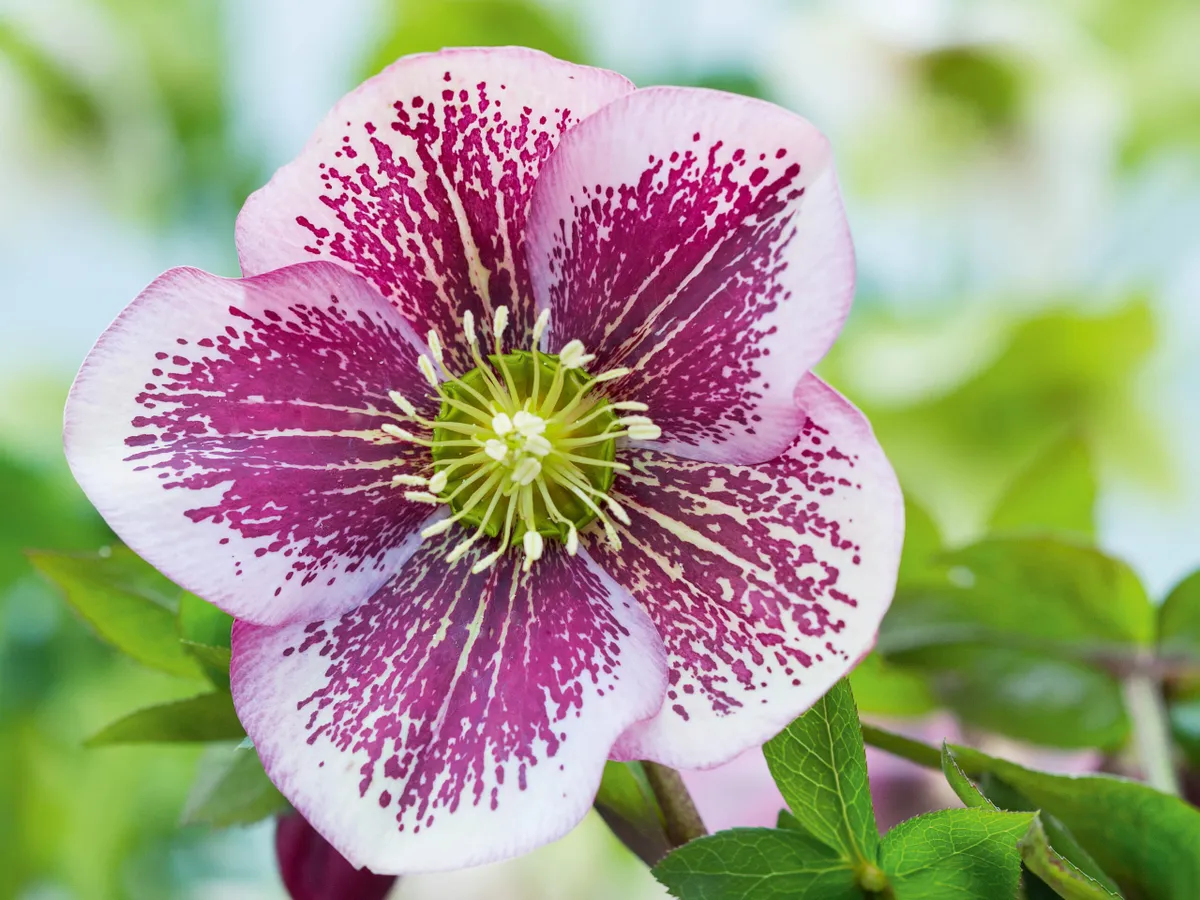
When to plant hellebores
Hellebores can be planted from autumn to spring. They are often bought in flower.
Where to plant a hellebore
In the wild, most hellebores grow under the canopy provided by deciduous trees and shrubs, and this is the idea place for them in the garden. Although they will tolerate sunny situations they grow best in places that are shaded from midday sun. Avoid deep shade, however, as this will inhibit the plants from flowering. Helleborus x hybridus are amenable plants that will grow both in light, sandy soils and in heavy clay soils, as long as the soil is rich in organic matter.
When to cut back hellebore
Helleborus x hybridus are evergreen but their leaves do die back and should be removed. Remove the previous season’s dying leaves in December, cutting back to the base of the stalk. This allows air and light into the centre of the plant and will encourage healthy flowers.
You can deadhead flowers once they have gone over.
How to plant a hellebore
Hellebores are deep rooted so dig a hole about one-and-a-half times the height of a spade and incorporate plenty of humus in the form of well-rotted manure, leaf mould, mushroom compost or home-made compost.
Growing hellebores in pots
As they are deep rooted, hellebores do not grow well in pots. However it is fine to grow them in a pot for a season so that you can enjoy their blooms, then plant them out in the garden permanently afterwards.
How to care for a hellebore

During their first year after planting, keep your hellebore plants well-watered and mulch them with compost each autumn.
Hellebores produce masses of seedlings. Weed out any that seed themselves into the crown of the parent plant, otherwise they may smother it. You can leave others to grow on, or dig them up, grow them on in pots and plant back out in the garden when they have reached a decent size.
Hellebore leaf spot
Black or dark-brown blotches occasionally appear on the leaves. This is a fungal infection, called hellebore leaf spot, that is encouraged by damp conditions. Remove the leaves as soon as you spot the problem and burn them ‒ don’t put them in the compost bin as this will spread the disease.
When to sow hellebore seeds
You can collect the seeds from ripe pods on your own hellebore plants, and sow outdoors in July and August outdoors. Germination can take several months, and up to a year. They are usually large enough to plant out in the garden around two years after sowing. Bought hellebore seeds can be tricky to germinate.
Dividing a hellebore
Dividing is the easiest way to propagate most types of hellebore. Divide after flowering in spring, or in autumn.
Where to buy hellebores
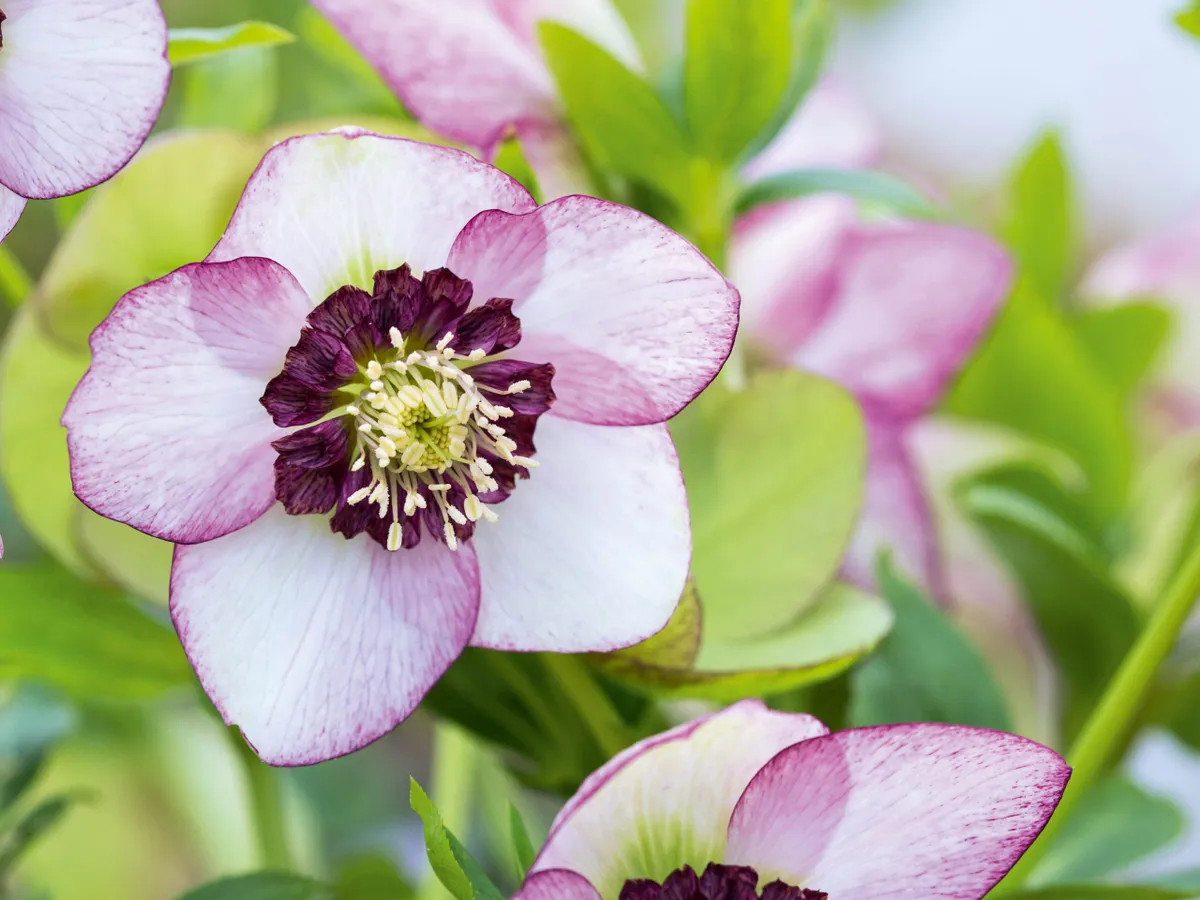
- Herfordshire Hellebores
Green Lane Farm, Levens Green, Ware, Hertfordshire SG11 1HD
Tel 01920 438458 - Ashwood Nurseries
Ashwood Lower Lane, Ashwood, Kingswinford, West Midlands DY6 0AE
Tel 01384 401996 - Twelve Nunns
Mail order only. Suppliers of Harvington Hellebores - Hazles Cross Farm Nursery
Hollins Lane, Kingsley, Staffordshire ST10 2EP
Tel 01538 752669 National Collection Holder, phone for plant availability.
HELLEBORES IN BRIEF
What Perennials with nodding, bell-shaped flowers and glossy, semi-evergreen foliage. Single, double and semi-double flower forms exist in a range of pinks, purples, yellows and whites, often with speckled or spotted sepals. The coloured parts of a hellebore flower are not petals but sepals. At the base of the hellebore's sepals there is a ring of highly modified petals that have fused at the edges to form tubes that hold the flower's nectar, and so are referred to as nectaries.
Origins In the wild Helleborus species are concentrated in the Balkans, with a few species in northern Europe and one in China. Helleborus x hybridus are the result of labyrinthine cross-pollination.
Season Winter-flowering, from December to April.
Size Approximately 60cm tall.
Hardiness rating RHS H6, USDA 6b-7a. (Hardiness ratings explained)
Hellebores recommended by our experts
Helleborus x hybridus
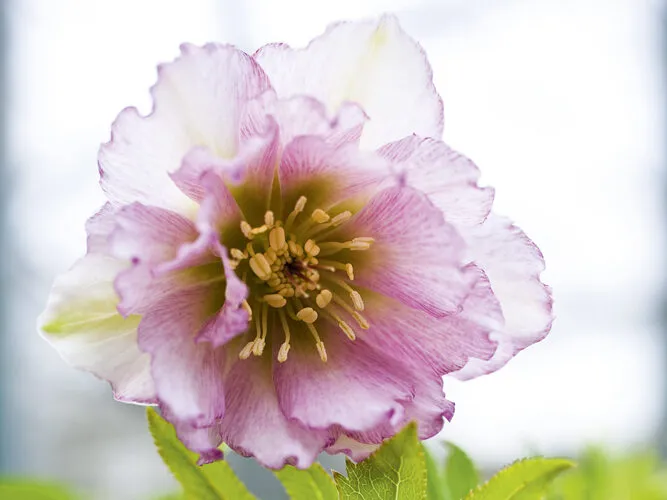
Recommended by: John Hoyland, plantsman and former nursery owner
Hellebores are very fertile plants and they hybridise with ease, as the the crop of seedlings that appears around them testifies. Most of these will have muddy purple flowers, but just occasionally you find a gem of a plant. This was one such, growing among a group of double-flowered and anemone-centred hellebores. A more reliable way to get results like this is to hand-pollinate your plants and sow the hellebore seed yourself. That this one appeared, with its frilly edge petals and soft pink flowers, with no intervention from me, makes it a one-off delight that I cherish.
Helleborus x ericsmithii ‘Bob’s Best’
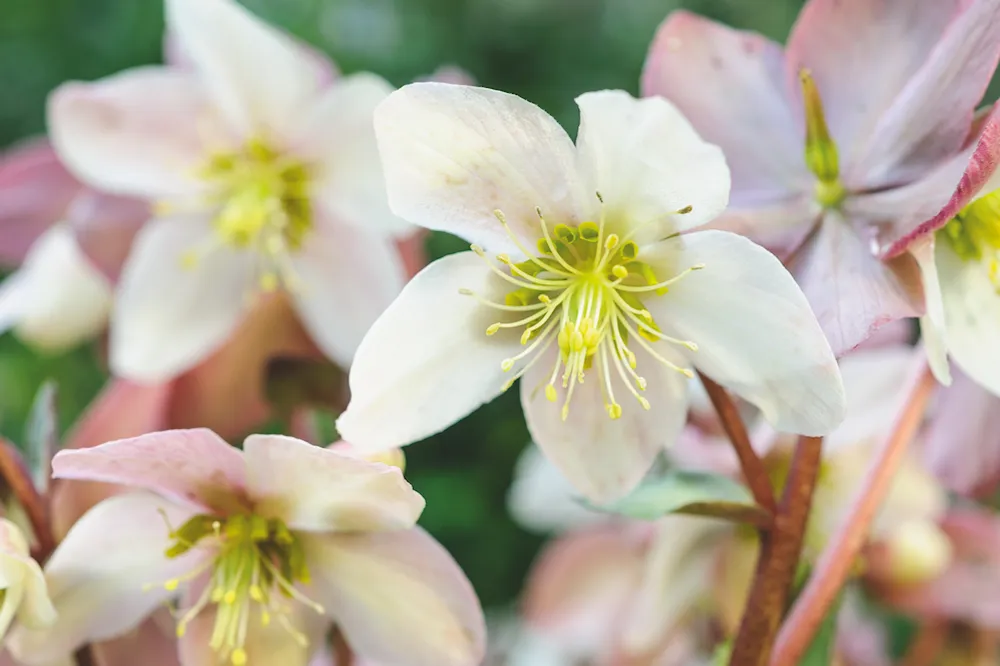
Recommended by: Derry Watkins of Special Plants Nursery
A cross between Helleborus argutifolius for its hardiness, Helleborus lividus for its leaves and Helleborus niger for its flowers. Unlike orientalis hybrids, this helleborus does not like rich woodland conditions. It revels in sun and drainage. It has fabulous outward-facing flowers held well above the leaves. They age from creamy white to pink to almost red; because each hellebore flower lasts so long all the colours may be visible at once. The evergreen leaves don’t need to be cut to the ground – just remove tatty ones.
Buy Helleborus x ericsmithii ‘Bob’s Best’ from Cotswold Garden Flowers
Helleborus x hybridus ‘Yellow Lady’

Recommended by: Chris Marchant at Orchard Dene Nurseries
There are so many beautiful hellebores that I can’t choose just one as a favourite, but this pale yellow hellebore deserves a mention. Usually unmarked, the flowers are occasionally speckled burgundy at the base of the nectaries. Upright stems hold the hellebore flowers proud of the foliage, giving a perfect opportunity to appreciate their long-lasting display. The colour is especially effective teamed with the purples and blues of a woodland border: I have clumps mixed with Pulmonaria ‘Blue Ensign’ and the glossy spring foliage of giant colchicums.
Buy Helleborus x hybridus ‘Yellow Lady’ from Bluebell Cottage Nursery
Helleborus niger Harvington hybrids
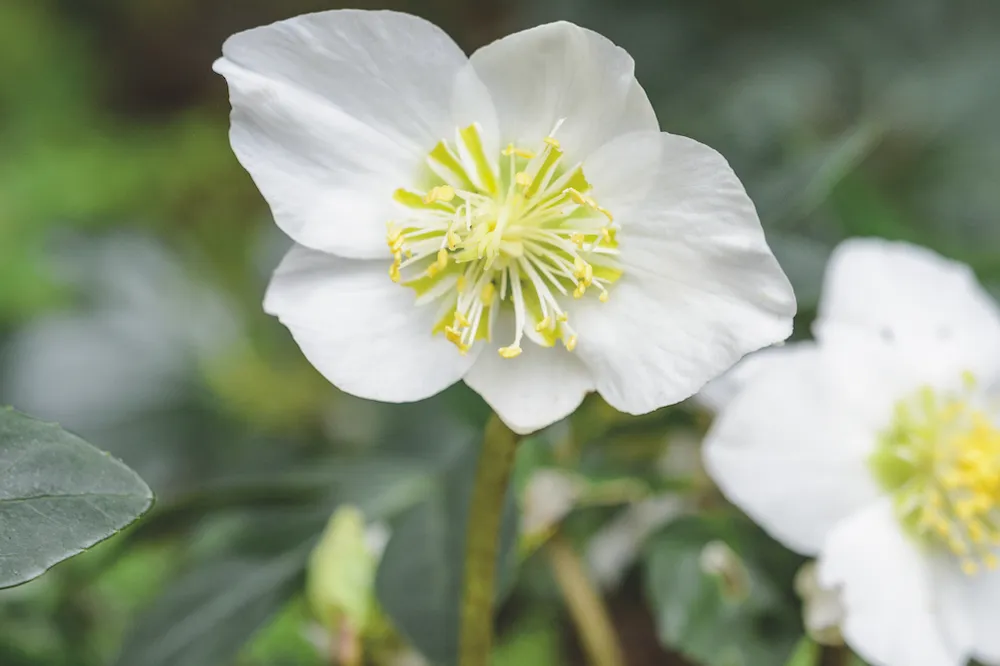
Recommended by: Mat Reese
This selection from Harvington Hellebores has bloomed before Christmas for the past few years and produces little vignettes of sumptuous, white flowers, each blossom centred with a cluster of golden stamens. Although these hellebores have a reputation for requiring a limy soil, mine have been thriving in stony, humus-rich, acidic soil for some years. These hellebores do take time to establish, resent disturbance, and hate sitting wet. They’re also gross feeders, meaning they are hungry plants and so need to be fed annually with compost.
Buy Helleborus niger Harvington hybrids from Twelve Nunns nursery
Helleborus atrorubens
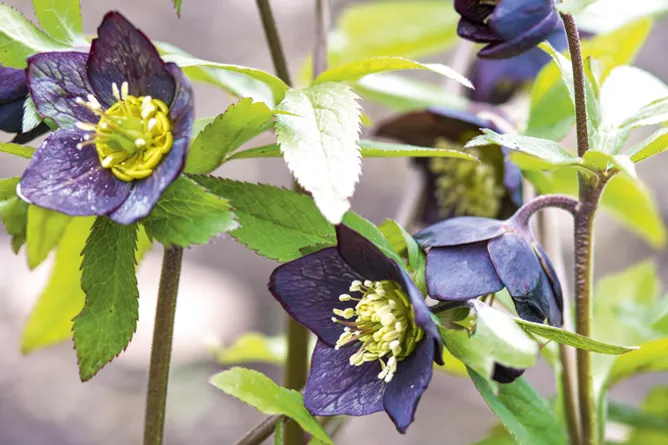
Recommended by: Hans Kramer, owner of De Hessenhof
In Slovenia, where it grows in the wild, this hellebore - seldom seen in cultivation - starts flowering in April but in the mild, unstable winters of northwest Europe it usually starts to flower in February. With so many hybrids now flooding European nurseries, it is refreshing to see the subtle charm of the true species. This is the only species where the petals, which are in fact sepals, hold their colour long after pollination. What's more, it's deciduous so you don't have to worry about cutting leaves in the winter.
Buy Helleborus atrorubens from Ashwood Nurseries
Helleborus x sternii 'Silver Shadow'

Recommended by: Fleur van Zonneveld, of De Kleine Plantage
Among the slew of new hellebore hybrids and cultivars, all with fabulous colours, flower shapes and leaf structures, 'Silver Shadow' demands a special place. It has extraordinary flower – a mix of pink, green and apricot colours – that rise wonderfully against the silvery leaves with serrated edges. It is lower and more compact than many other hellebores and does very well in pots. Unlike most other hellebores, it likes a sunny, dry and alkaline soil.
Buy the similar Helleborus x sternii from Crocus
Helleborus x hybridus white-flowered

Recommended by: Mat Reese, head gardener at Malverleys
There are many hellebore hybrids to choose from – and I have quite a few of them in the woodland garden at Malverleys – but my default is the white-flowered form with a green eye. Unlike the darker forms, it shows up well, particularly in shady woodland conditions. It has vigour and, if kept isolated from other colours, will self-sow true from seed. In the winter when the ground is too hard or too wet to work, cut out the tatty old leaves and feed with leaf mould so the flowers are displayed at their best.
Helleborus x hybridus Harvington red

Recommended by: Polly Nicholson of Bayntun Flowers
Outward-facing, saucer-shaped, flowers in varying shades from deep pink to clear red with deeply cut foliage. This hellebore makes a good cut flower once the seedheads have formed, especially if the tips of stems are seared.
Buy Helleborus x hybridus Harvington red from Crocus
Helleborus x ericsmithii 'Winter Sunshine'
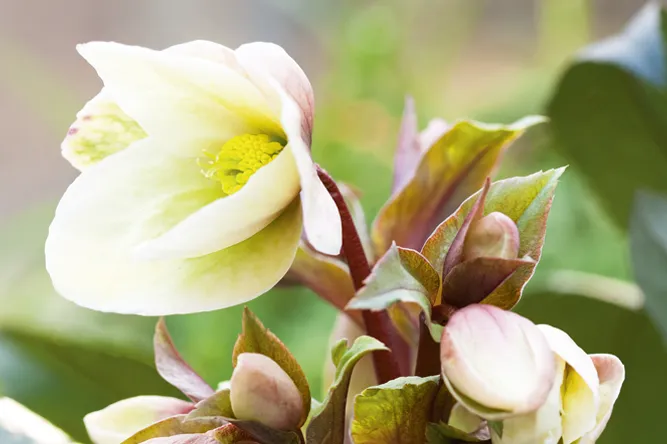
Recommended by: John Hoyland, plantsman and former nursery owner
Helleborus x ericsmithii has distinguished origins. Firstly, botanist Frederick Stern crossed Helleborus lividus with Helleborus argutifolius to produce the robust and attractive Helleborus x sternii. Sixty years ago plantsman Eric Smith crossed this with the large, white flowers of Helleborus niger. The result was a jewel of a plant with lightly marbled foliage and pink-tinge, white flowers. Thanks to micro-propagation, attractive forms of this plants can be reproduced easily. This one is vigorous and has dark green leaves with a pewter sheen. The flowers are ivory-white, turning a deep pink as they age.
Buy Helleborus x ericsmithii 'Winter Sunshine' from Garden Beauty
Helleborus foetidus
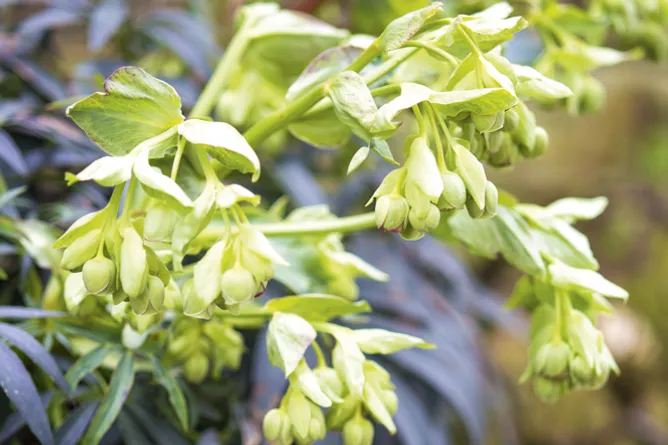
Recommended by: Hans Kramer, owner of De Hessenhof
Although this is the shortest living hellebore – it rarely lives longer than three to four years – I could not do without it. It is a good, all-round plant, starting with attractive, deeply divided leaves, which are a dark green. Some cultivars, such as 'Sopron', can have a silvery sheen to the lear, while Helleborus foetidus Wester Flisk Group has striking beetroot-coloured stems that contrast well with the pale-green flowers. These begin as rosettes, which tart to elongate as the weather gets cooler, then form light-green buds that gradually open over winter.
Buy Helleborus foetidus from Crocus
Hellebore breeding
The flowers of Helleborus orientalis used to be a dull pink but in the 1960s nurserywoman Helen Ballard extended the colour range to include dark pinks and white. During the 1970s and 1980s another formidable nurserywoman, Elizabeth Strangman, bred plants that had dark flowers or flowers that had dark-edged, petal-like sepals, which have become known as picotee (from the French picoter, to speckle or to mark with various colours). Strangman also collected seed from plants growing in the wild, and in Montenegro came across plants of Helleborus torquatus that had double flowers, which she introduced into her breeding programme.
Other plant enthusiasts continued to breed evermore beautiful hellebores. Robin White of Blackthorn Nursery focused both on double-flowered forms and on those with spotted sepals; at Ashwood Nurseries, John Massey and Kevin Belcher have produced an astonishing range of hellebores, in particular ones with strong colour on the reverse of the sepals. Hugh Nunn, who formerly ran Harvington Hellebores, has a breeding regime that produces seed strains consistent in their flower colour and vigour.

One of the latest links in this chain of hellebore breeders is Lorna Jones of Hertfordshire Hellebores. Her initial motivation was to provide great plants for her own garden, with an emphasis on tall, early flowering plants that were disease resistant. One of the most sought-after types of hellebore are the so-called anemone forms, plants where the nectaries are enlarged to form a ring of small tubes at its centre. Lorna has been able to produce anemone forms where these nectaries are the same colour as the sepals, others that have picotee sepals and, most dramatically, forms that have nectaries that contrast with the sepals.
Some of the Helleborus torquatus hybrids have double flowers and hark back to the first double that Elizabeth Strangman found growing in the wild. Their sepals tend to be narrow and twisted, so Lorna has christened them ‘spider’ hellebores.
New hellebore hybrids to look out for
Here are some of the beautiful hellebores bred by Lorna Jones at Hertfordshire Hellebores.
Anemone centre

The enlarged nectaries of Helleborus x hybridus Purple Speckle create a dark ruff at the middle of the flower, known as an anemone centre. The purple sepals are slightly pointed and are heavily mottled with dark purple.
Raspberry red
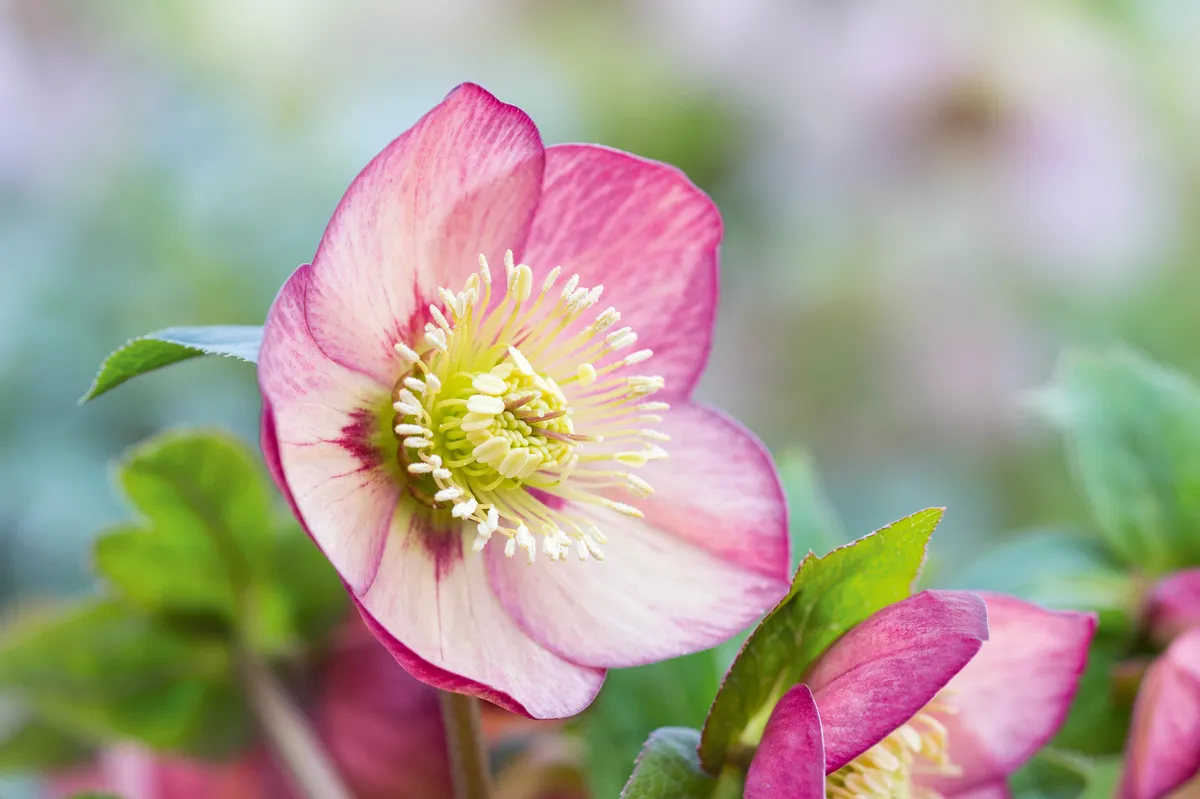
Lorna is still searching for the elusive true red, and is in the process of selecting plants that have a red sheen on the petals. This seedling has lavender-pink sepals, which are packed with a contrasting raspberry colour. In addition to its colouring, Lorna has selected this plant for the rounded, open shape of its flower. This is Helleborus x hybridus Red Apricot.
Spider hellebore
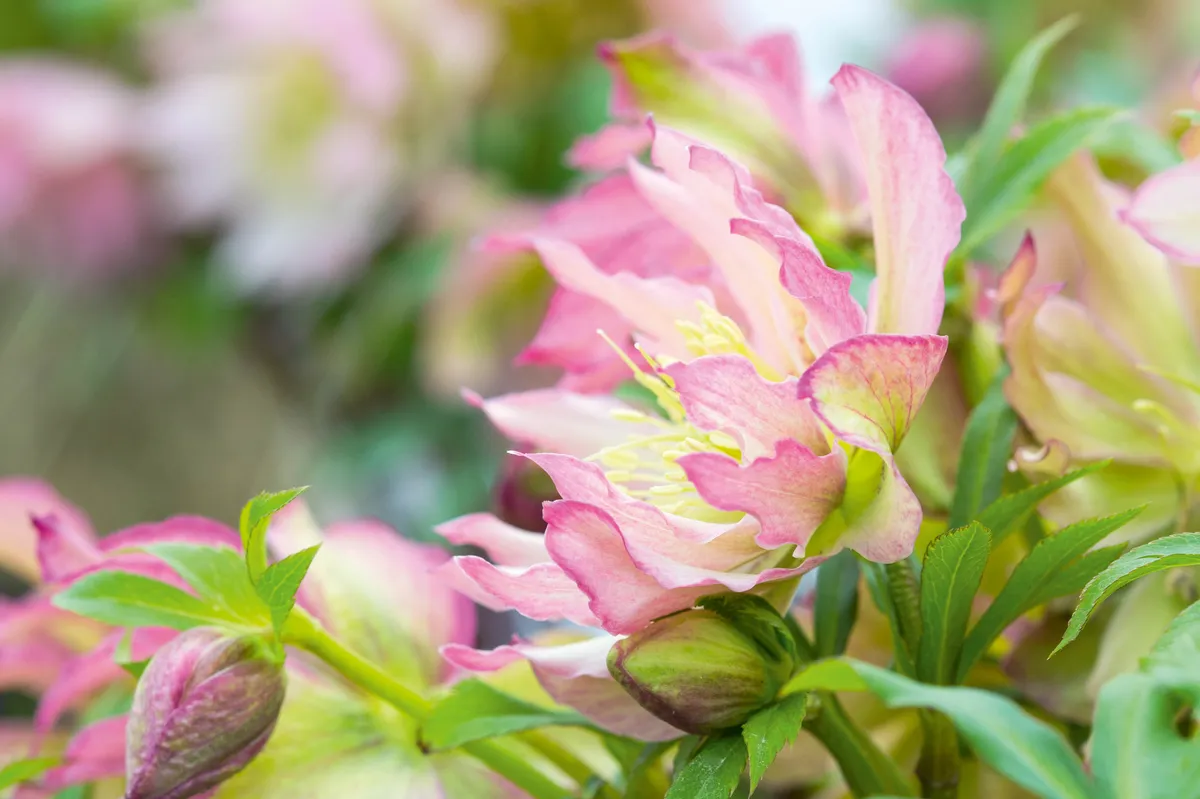
An unusual flower with several rows of narrow, same shaped flowers is one of the aims of twisting sepals to create what Lorna has dubbed ‘spider hellebores’. In this form the creamy-white sepals have a pale pink back. This is Helleborus torquatus hybrid Spider Double.
Double

A double-flowered form with pink sepals that are heavily speckled on the inside and have a dusky-pink back. The sepals are narrower than normal with slightly crimped edges that create a frilly flower. This is Helleborus x hybridus Pink Red Speckle Double.
Picotee

A heavily spotted form that harks back to some of the earlier results of hellebore breeding. Unlike those, this plant has beautifully rounded, symmetrical sepals. This is Helleborus x hybridus Pink Spotted.
Additional photography by Jason Ingram, Maayke de Ridder and Sharon Pearson